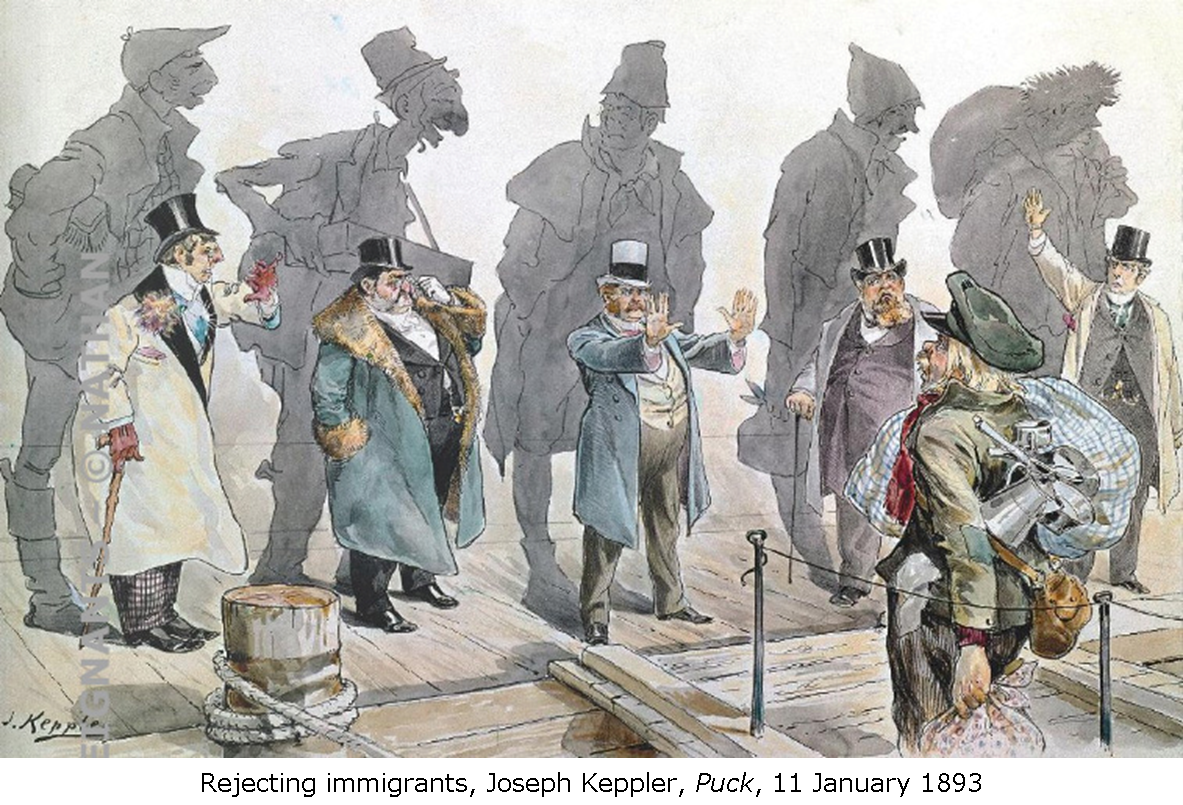![]() THE AMERICAN DREAM
THE AMERICAN DREAM
Method: Commenting on a cartoon

Stage 1: Presenting the document: the introduction
(rephrase references) This engraving by Joseph Keppler published in the magazine Puck on 11 January 1893 criticizes the attitude of Americans who reject new immigrant, (define main notion) that is to say who want to prevent new population to enter the USA, (give context) at the end of the 19th century, at the time of the second Industrial Revolution and mass European immigration to the US.
Stage 2: Analysing the document
| DESCRIBING A CARTOON - What you see structured (≠ parts) and detailed description |
INTERPRETING A CARTOON - What you know add and structure the definition of key notions |
Foreground |
New immigrants •New immigration: 2nd wave of immigrants from southern and eastern Europe from the 1890s to 1920 • = more and more diverse, different + less skilled + massive flows: mass immigration =>perceived as a threat |
| Background: on the wharf • Front: (characters’ appearance) 5 very well dressed men with fur coats, top hats, well fed, pot-bellied ; (expression) looking severely or with dismay at the newcomer or (action) raising their arm in a stopping gesture •Back: their 5 shadows poorly, shabbily dressed, painfully thin, stooped |
Versus old immigrants • well integrated: self-made men who climbed the social ladder •wishing for closed borders, to prevent or restrict the free movement of people because of prejudice: fear of competition => former immigrants coming from northern and western Europe between the 1840s and the 1880s = old immigration |
Stage 3: Concluding
To conclude, (assess doc) we can say this cartoon is reliable as we have all the necessary references (and Keppler is a well-known artist), but biased because the artist is criticizing old immigrants with a short memory.
To recap,(sum-up ideas) this engraving criticizes prejudiced successful old immigrants who wanted to reject new immigrants because they felt threatened, they didn’t want to share the American Dream. However, the US border remained open and didn’t close.